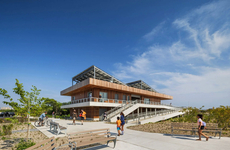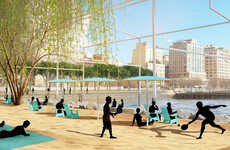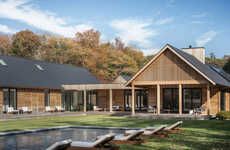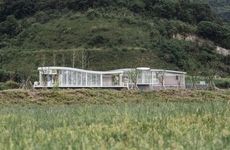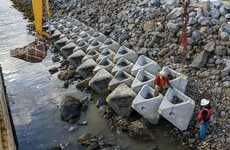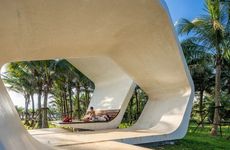
‘Garrison Architects’ Rebuilds NYC Beaches After Hurric
M — May 15, 2013 — Art & Design
References: garrisonarchitects & psfk
After Hurricane Sandy devastated many beautiful New York beaches, ‘Garrison Architects’ was recruited to help rebuild 37 new, stronger, storm-resistant and modern lifeguard stations to restore Midland Beach, Coney Island and Rockaway Beach in time for Summer.
These innovative lifeguard stations surpass all storm surge requirements and guarantee to hold up to any type of weather. The stations are steel-made cabins roughly 15-feet wide by 57 or 47-feet long and 12-feet high that stand modern and elegant alongside the rugged tan beach sand and the cool blue water.
Each contains several offices, public restrooms and compartments for the lifeguards to sit and keep and eye on the beach. Adding to the modern feel, each station has built-in skylights, glass ceilings, glass tiling, a natural ventilation system and runs off of solar panels. While the current images are mock ups, the sheer beauty of the stations will be enough to restore these NYC beaches back to their former glory days.
These innovative lifeguard stations surpass all storm surge requirements and guarantee to hold up to any type of weather. The stations are steel-made cabins roughly 15-feet wide by 57 or 47-feet long and 12-feet high that stand modern and elegant alongside the rugged tan beach sand and the cool blue water.
Each contains several offices, public restrooms and compartments for the lifeguards to sit and keep and eye on the beach. Adding to the modern feel, each station has built-in skylights, glass ceilings, glass tiling, a natural ventilation system and runs off of solar panels. While the current images are mock ups, the sheer beauty of the stations will be enough to restore these NYC beaches back to their former glory days.
Trend Themes
1. Storm-proof Infrastructure - There is an opportunity to create storm-resistant infrastructure for other industries such as buildings, transportation, and energy to mitigate damage and increase resiliency during natural disasters.
2. Eco-friendly Design - By incorporating sustainable materials and renewable energy sources, there is an opportunity to create eco-friendly designs for infrastructure that can lower carbon footprint and promote green energy.
3. Smart Infrastructure - By using sensors, data analytics and other emerging technologies, there is an opportunity to create smart infrastructure that can predict and respond to natural disasters, enhance public safety and improve operational efficiency.
Industry Implications
1. Beach Resort Industry - There is an opportunity to incorporate storm-resistant and eco-friendly designs into beach resort industry infrastructure to promote sustainable tourism and increase resiliency during natural disasters.
2. Emergency Management Industry - With the increasing frequency of natural disasters, there is an opportunity to develop storm-resistant and smart infrastructure solutions for the emergency management industry, to improve disaster response capabilities and save lives.
3. Public Infrastructure Industry - There is an opportunity to retrofit public infrastructure such as buildings, bridges and roads with storm-resistant and eco-friendly designs to reduce damage and promote resiliency in the face of natural disasters.
1.5
Score
Popularity
Activity
Freshness



